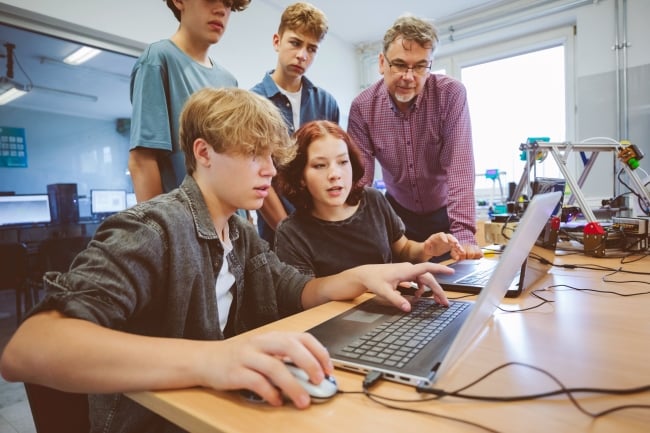You have /5 articles left.
Sign up for a free account or log in.

A new survey from Gallup and the New Hampshire Learning Initiative found students gained insight into careers through career-connected learning in high school and middle school.
izusek/E+/Getty Images
In New Hampshire, investment into career-connected learning (CCL) for young people has paid off, with recent survey data from Gallup finding a majority of high school students want to participate in more of these opportunities and see experiences expand.
One-third (38 percent) of respondents in high school say CCL experiences have informed their plans after high school, and almost two-thirds (64 percent) of students say they want more related opportunities, according to the report, co-authored by Gallup and the New Hampshire Learning Initiative.
The findings highlight a need for early career engagement among students and how visibility of postsecondary paths can encourage certainty in their post–high school plans.
Methodology
Gallup’s survey engaged over 8,500 fifth through 12th grade students from 25 schools and 13 districts in the state of New Hampshire.
What’s the need: Helping young people identify career paths and make informed decisions after high school is a growing need across the U.S.
A May survey by Jobs for the Future found 66 percent of young people (ages 16 to 24) did not know exactly what career they wanted to pursue, and 62 percent of respondents didn’t feel empowered or in control of their career path.
Young adults with a bachelor’s degree were slightly more likely to know their career path (42 percent), compared to their peers without a degree (33 percent).
Within higher education, more colleges and universities are providing early career development during a student’s first year or embedding career planning into the curriculum to ensure every student receives guidance and preparation before graduation. Gallup’s study shows that incorporating careers into the curriculum can have an impact even before college, as students navigate postsecondary decision-making.
What is CCL? Career-connected learning in schools includes participating in a field trip related to work, watching a panel on jobs, receiving career and technical education, engaging in mentorship, and volunteering, as well as completing a job shadow, an internship or apprenticeship.
The study found that 90 percent of middle and high school students participated in at least one career-connected learning activity through their school, and 73 percent of high school students agreed their school offers many CCL opportunities.
The greatest share of students engaged with jobs in class through an activity (58 percent) or through a career fair (40 percent) or on a field trip (37 percent).
Among high school students, those in 11th or 12th grade were more likely to say they had CCL in the past year.
Taking next steps: Engaging with careers in the classroom has exposed students to new pathways as well. Forty-seven percent of high school students said they learned about a job or career they had not heard of before while at school this past year. However, not every student has seen themselves and their passions in CCL learning; only 48 percent of students report their school’s CCL includes the types of jobs and careers they’re interested in.
Survey data showed experiential learning opportunities were most helpful in informing students’ plans after graduation, particularly for students who participated in an internship or externship (57 percent), registered apprenticeship (54 percent), or volunteer position related to a job or career (51 percent).
However, these activities had the lowest participation rates, with only 17 percent of upper-level high school students interning or externing and 9 percent holding an apprenticeship.
Students who received CCL were more likely to engaged and hopeful for the future and say their experiences at school make them feel like many different types of jobs could be a good fit for them.
So what? A previous report from American Student Assistance and Jobs for the Future found high school students need additional communication from colleges and universities to support their career paths after high school.
Despite more students being inclined toward work-based learning or an alternative pathway, a lack of information about opportunities is a barrier to participation.
Gallup’s research also noted community-based experiences—such as internships, volunteering, job shadowing or extended learning opportunities—were more highly correlated with certainty of plans after high school. Colleges and universities can help in creating opportunities for young people to engage in career-affiliated spaces outside of their schools.
One example: This year, the facilities department at Florida State University established a program, Pathways to Success, that provides work-based learning to local high school students. Students work alongside the Facilities Control Shop team as trainees, learning to troubleshoot systems on campus related to HVAC.
Do you have a career prep tip that might help others encourage student success? Tell us about it.




